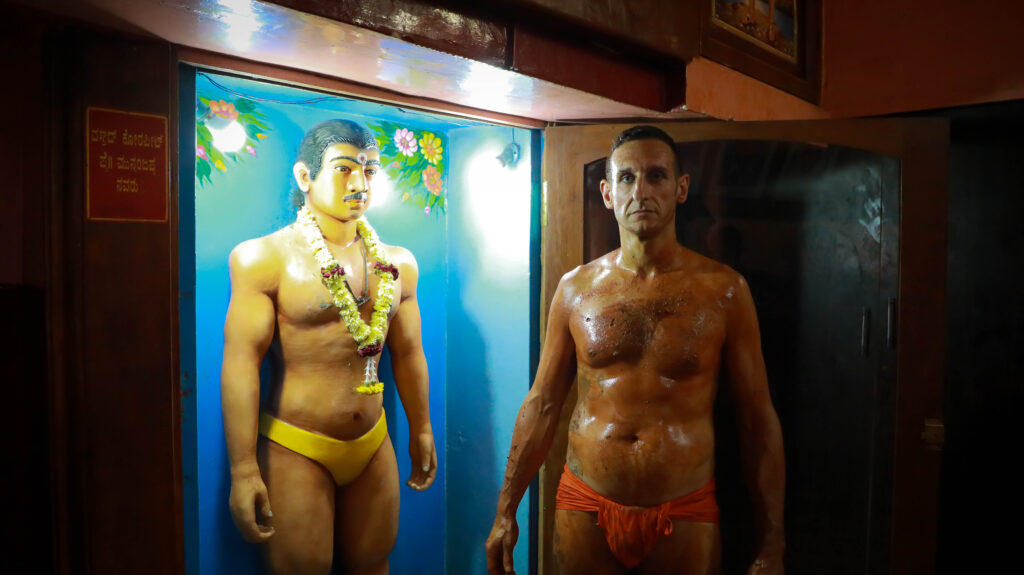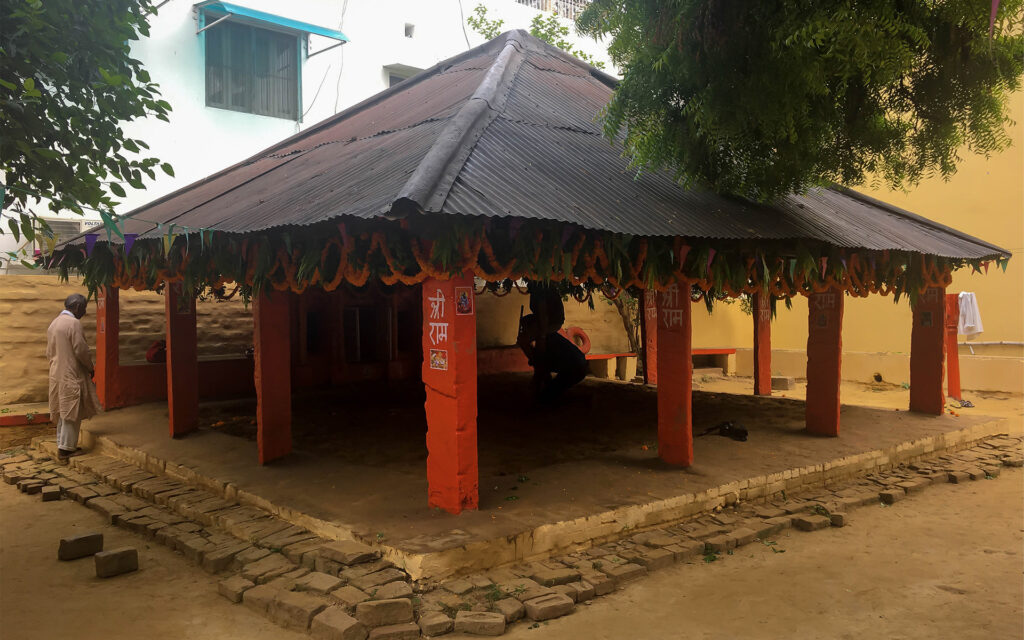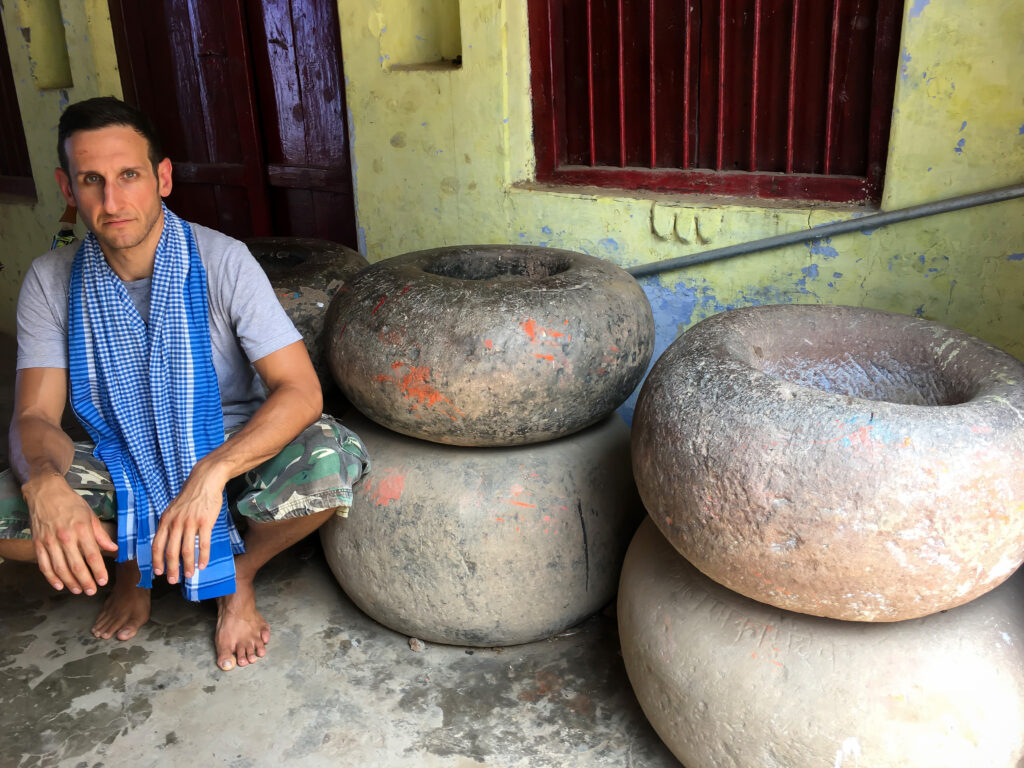
Nāl lifting stones are a common sight in the akharas of Varanasi, but none of them compare to the monsters at Sherwali Kothi, the House of the Tiger.
Sherwali Kothi is the multi-story, labyrinthine home of the Chaudhry clan and has housed several generations of the family on the banks of the Ganges for centuries. The Chaudhrys have been in charge of the funeral business in Varanasi as far back as anyone can remember. This makes them very powerful, despite their low caste status. The patriarch of the family is always considered the “king of the undertakers” and anyone who wants the all important funeral on the burning ghats of the Ganges has to go through him.

The point of interest for us is the lineage of nāl stone lifters that once made this family famous for more than cremations. The nāl is a large lifting stone that can be hoisted in several ways. It is a ring with a crossbar through the middle. They are fairly common all over Varanasi, but the ones at Sherwali Kothi are epic. So large and heavy, that they have not been lifted in a century.
The modern observer would immediately believe that they had never been lifted by a single man, but there is not only anecdotal, but also photographic evidence that these nāl were once used frequently by a father and his two sons who had the role of Chaudhry patriarch.
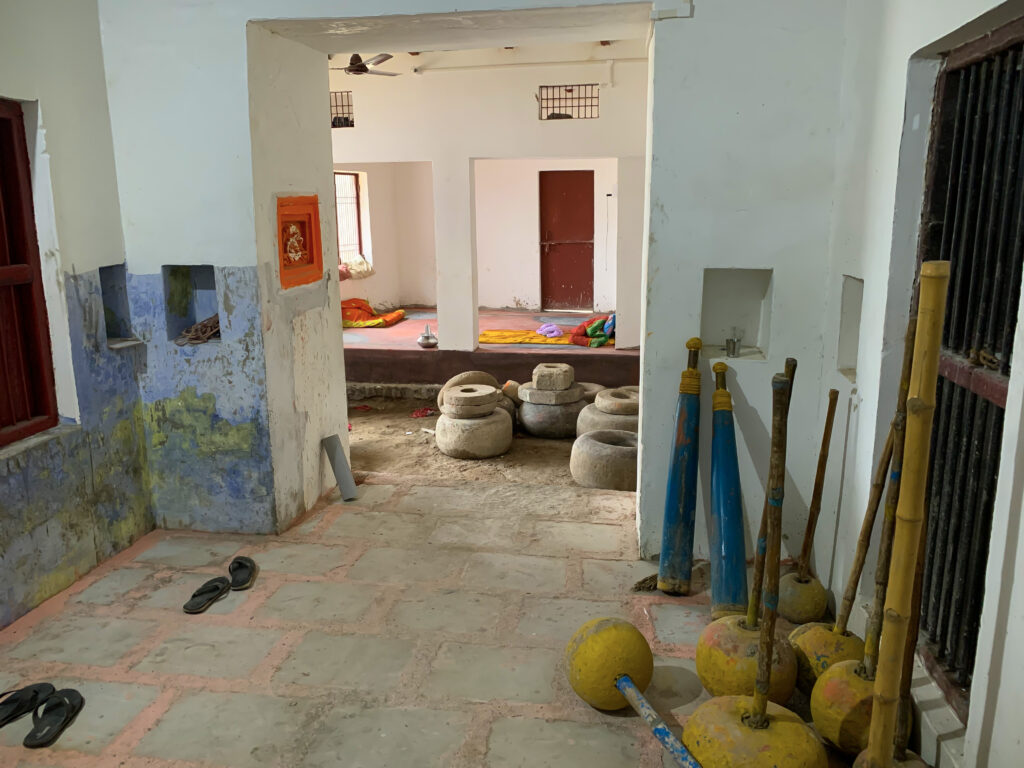
The small akhara at Sherwali Kothi has always been private. The first time I visited in 2019, it was open air and looked out onto the Ganges. The second time, it was being renovated and we feared it was being done away with entirely, but fortunately that was not the case and the nāl stones remain to this day.
The father in question is Devi Domb, or Devi Chaudhry Pahalwan. Born somewhere around 1857, he took up nāl lifting as a young man without any formal training, leading to his unusual style. There are a few images of Devi Domb, but the most impressive is the one below from 1903. This stereogram image shows Devi Domb lifting a 960 lb nāl. It is accompanied by the text below it.
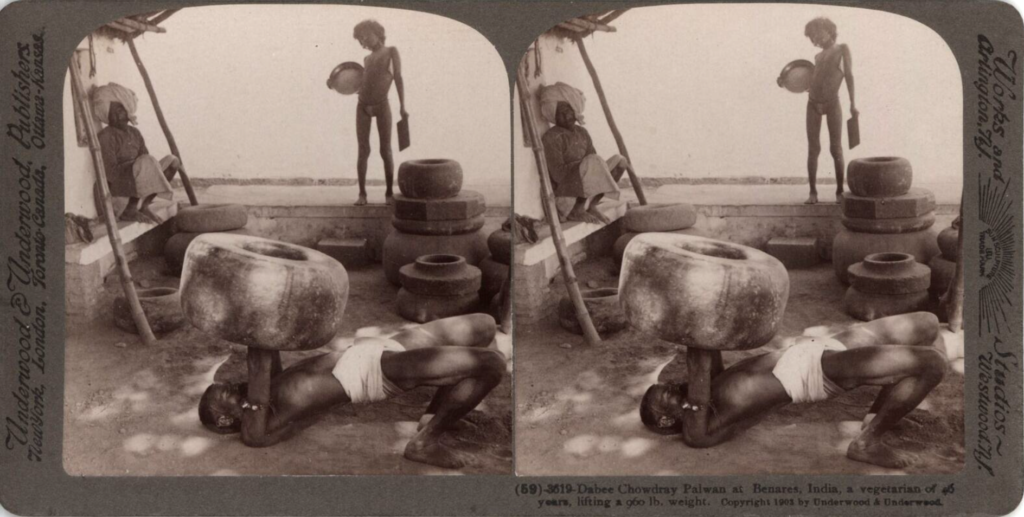
“Dabee Chowdray Palwan at Benares, India, a vegetarian of 46 years, lifting a 960 lb weight.
“We are only a short distance from the bathing and burning ghats. Palwan is not a large man, – about five feet, seven-and-a-half inches, – and weighs, if I remember correctly, a little less than one hundred and seventy pounds. He is a vegetarian. He never read a book on physical culture; he was never within the walls of a gymnasium or of any place for physical training. As a young man he gradually fell into the business of giving exhibitions. He chiseled suitable stones into symmetrical forms with cross-pieces as a hold; as he grew in years and strength he increased the size of his lifting weights.
“The weight of this stone (960 lbs.) is well authenticated by English officials; three of us made an attempt to move from its place and failed. It was brought to this position by Palwan unaided. In a seated posture, he tilted the stone from its flat surface to its edge, between his knees; then, lying prostrate, he brought it upwards towards his chest, by efforts almost painful to witness. With his elbows thrust down by his sides he wedged himself beneath it until it was well over his chest, then the final effort was made; it was sublimity in muscular exertion. The muscles in chest and arms became more and more rigid; the veins stood out like whipcord. As the half ton of stone moved slowly upward inch by inch, a tremor shook his whole frame – his eyes were closed in agony of effort; the great stone was sustained till the camera had secured this record. Then, with a tremendous muscular effort, he tossed the the half ton weight to the earth beyond his knees.”
Extract from India through the Stereoscope by James Ricalton. From Notes of Travel No. 39, copyright 1907 by Underwood and Underwood
Devi Domb and his sons are all pictured in the iconic Encyclopaedia of Indian Physical Culture from 1950 edited by S. D. C. Mujumdar. Devi Domb was long dead by that point, but the old photo they published (top left) along with those of his two sons depicts the same man as in the stereogram, but a little older. The painting of Devi Domb which hangs in the akhara at Sherwali Kothi is testament to his strength even in his twilight years, showing him performing a “Turkish get up” with a large nāl.
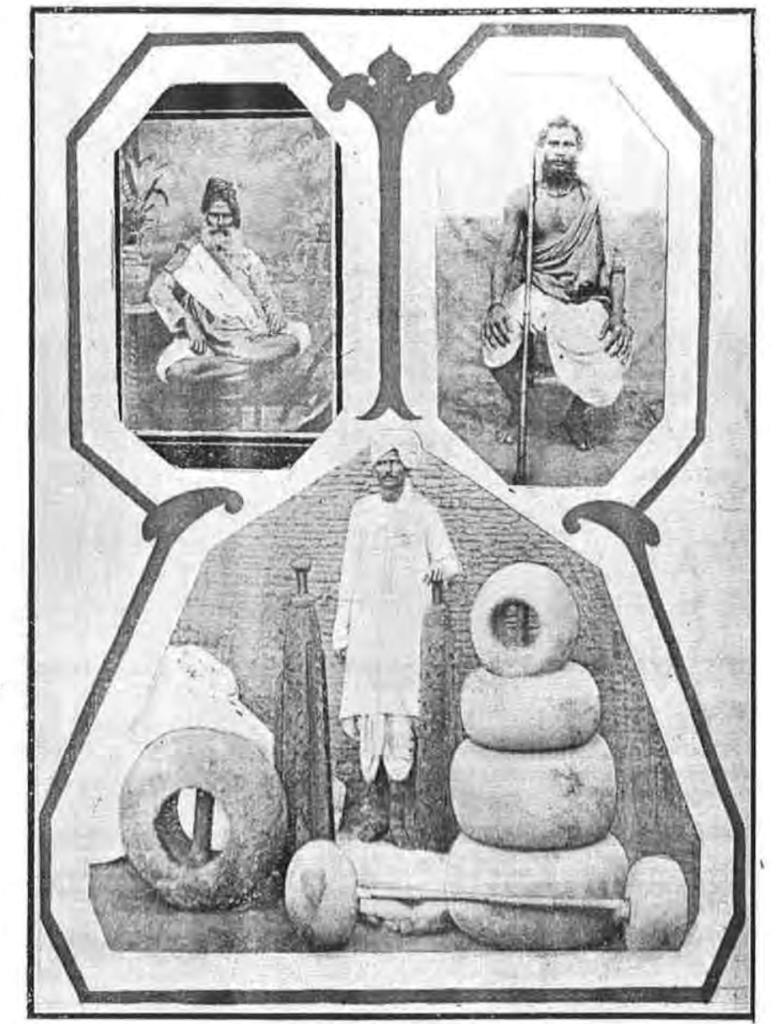
I had a conversation on the Steel Mace Nation Podcast where I said that we are not as strong as people were in the past. I used the example of the stones lifted by Devi Domb and his sons to illustrate my point. The skeptical modern mind will not conceive of such a weight being lifted as that in the stereogram, but it is true. The stones exist to this day and nobody has been able to move them on their own, let alone lift them above their head or chest.
